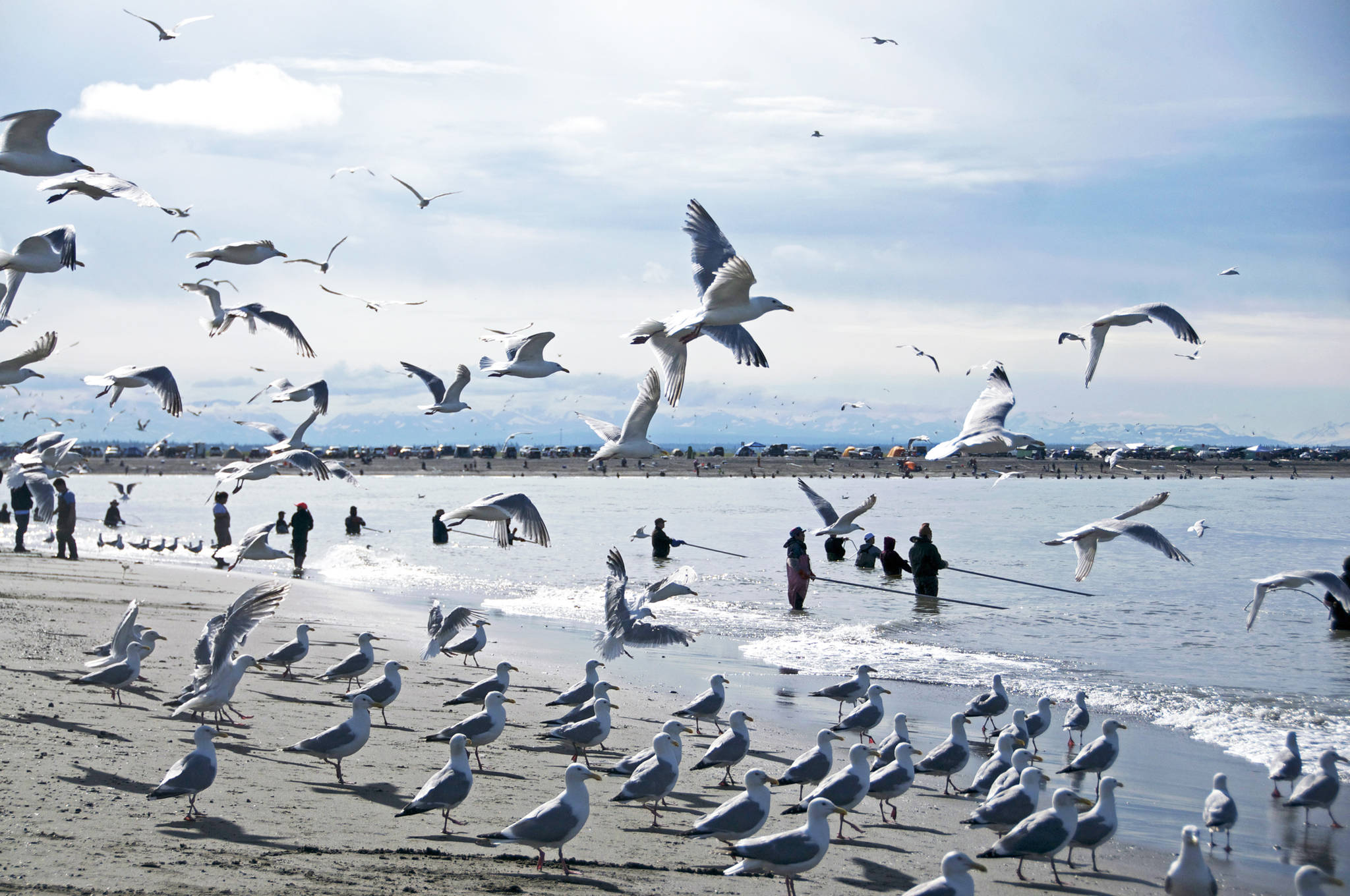Tuesday marks the beginning of the busiest part of the visitor season in Kenai — the personal-use dipnet season.
The Kenai River personal-use dipnet fishery is the most popular in the state. Running for three weeks between July 10–31 each year, the dipnet attracts thousands of Alaskans from all over the state. In 2017, anglers fished a total of 27,775 days in the personal-use dipnet fishery, harvesting a total of 307,824 salmon, according to the Alaska Department of Fish and Game’s online harvest records. The vast majority of those are sockeye — 297,049, according to Fish and Game.
The sockeye runs around the Gulf of Alaska have been lackluster so far this year and the Upper Cook Inlet sockeye returns are predicted to be weaker than the last 20-year average. As of Friday, 24,177 sockeye had passed the sonar in the Kenai, compared to the 35,053 that had passed the sonar on the same date in 2017, according to Fish and Game.
Dipnetters access the river by boat from a launch upstream or at the Kenai City Dock or on one of the city’s two beaches. Unless Fish and Game managers change the hours of the fishery by emergency order based on the number of sockeye passing the inriver sonar, the fishery is open every day from 6 a.m.–11 p.m.
Some things to know about the Kenai dipnet:
Fees
The city of Kenai manages the fishery, as it occurs on city beaches. To help pay for trash removal, law enforcement, beachcombing and the maintenance of the parking lot, among other expenses, the city collects fees for parking and camping on both beaches as well as parking and boat launches at the Kenai City Dock.
The fees are the same as last year — $10 to drop off, $20 to park for the day, $45–55 for overnight parking and $25 to camp on the beaches. Dropff and day parking fees are the same at Kenai City Dock, and a launch plus parking costs $35.
The city of Kenai debuted a smartphone app specifically geared toward the dipnet fishery last year. It includes daily fish counts, tides, weather and other announcements as well as access to a webcam on the beach. The app also includes a fee calculator and information about services in the area.
Law enforcement
The city of Kenai hires seasonal employees to patrol the beach and enforce parking and camping regulations as well as cleaning up trash, help with traffic control and coordinate with the police and fire departments in case of emergency. Alaska State Wildlife Troopers also regularly enforce personal-use recording and salmon-marking requirements — fishermen have to clip the tips of both tails fins immediately.
The Kenai Fire Department patrols the waters near the fishery, both to rescue anyone who needs help and to enforce the city’s no-wake zone. The zone includes the immediate vicinity of the Kenai City Dock and the southern bank of river miles 3–5 to help control erosion.
The no-wake zone is also to protect dipnetters, who often wade far out into the water and operate smaller boats, which have been swamped by wake in the past.
Fish retention
Fish and Game announced in an emergency order issued June 21 that no king salmon can be kept in the Kenai River dipnet fishery this year. King salmon returns around Cook Inlet, including on the Kenai River, have been poor so far this year and the move is meant to protect Kenai River kings, according to a press release issued July 5. Bait is also restricted in the sportfishery and fishing for kings is closed upstream of Slikok Creek this year for the same reason.
“The 2018 king salmon runs throughout Cook Inlet have consistently and significantly underperformed (Fish and Game) preseason forecasts resulting in restrictions and closures of inriver and marine sport fisheries,” the release states. “(Fish and Game) will continue to monitor the Kenai River run as it develops and additional actions may be taken depending on the run strength.”
Sockeye are the main target fish. Bag limits for all Cook Inlet personal use fisheries are 25 salmon and 10 flounder per year for the permit holder and 10 salmon for each additional household member.
Reach Elizabeth Earl at eearl@peninsulaclarion.com.

